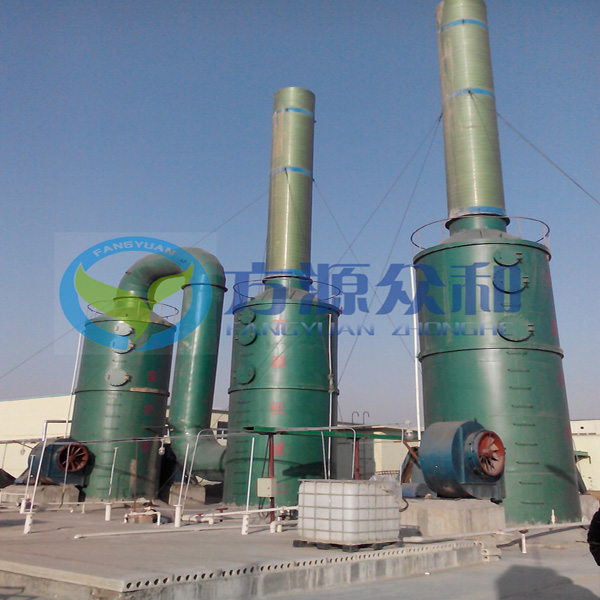FCT Ammonia Nitrogen Stripping Tower
FCT Ammonia Nitrogen Stripping Tower
FCT Ammonia Nitrogen Stripping Tower
The theoretical basis of blowing off technique is that the NH3-N in the wastewater is usually in equilibrium with the state of ammonium (NH4+) and free ammonia (NH3) (NH4++OH- =NH3+H2O). When PH is neutral, NH3-N mainly exists in the form of ammonium ion (NH4+). When pH is alkaline, NH3-N mainly exists in the state of free ammonia (NH3). The stripping method is to add alkali to the waste water, adjust the pH to alkaline, first convert the NH4+ in the wastewater to NH3, then through the steam or air to desorb, and convert the NH3 into the gas phase, so that the NH3-N is removed from the water. After stripping, the ammonia nitrogen in the wastewater generally remained within 120mg/L. To prevent the ammonia nitrogen from blowing out of two times, the ammonia nitrogen absorption device is usually set up after blowing off, and the absorbed ammonia can be used as the fertilizer for the crops. The high concentration ammonia nitrogen in wastewater was treated by stripping technology. The technological conditions were pH = 10-11, blow off time of 120min, and gas water ratio of 2000-2500:1.
Counter flow operation is often used in stripping tower, with a certain height of filling in the tower to increase gas liquid mass transfer area, which is conducive to desorption of ammonia from wastewater. The filler uses polyhedron hollow spheres. The waste water is raised to the top of the packing tower and distributed to the whole surface of the packing. Through the flow of packing, the flow of the gas is reversed with the gas. The partial pressure of ammonia in the air increases with the increase of the ammonia removal, and decreases with the increase of the gas and liquid ratio.
At present, the main form of ammonia nitrogen stripping is the continuous stripping tower. The stripping method of continuous stripping tower has higher removal efficiency and less occupied area.
